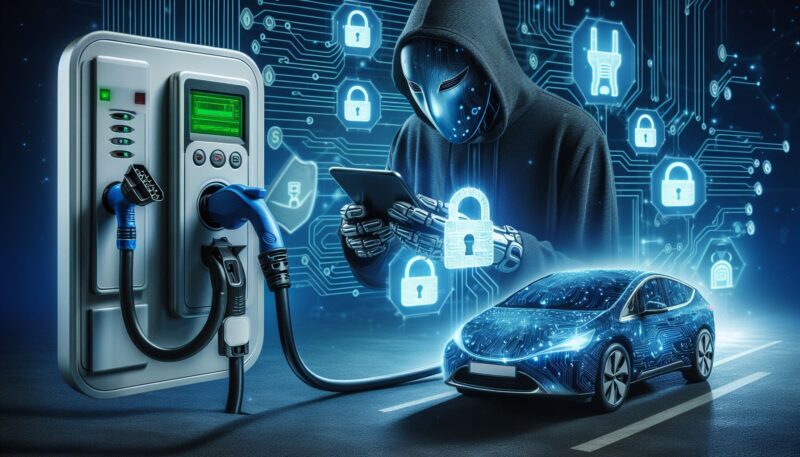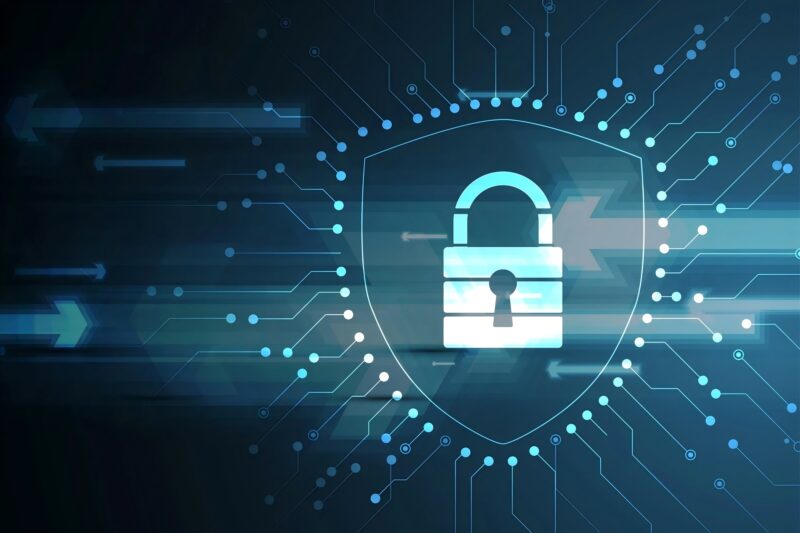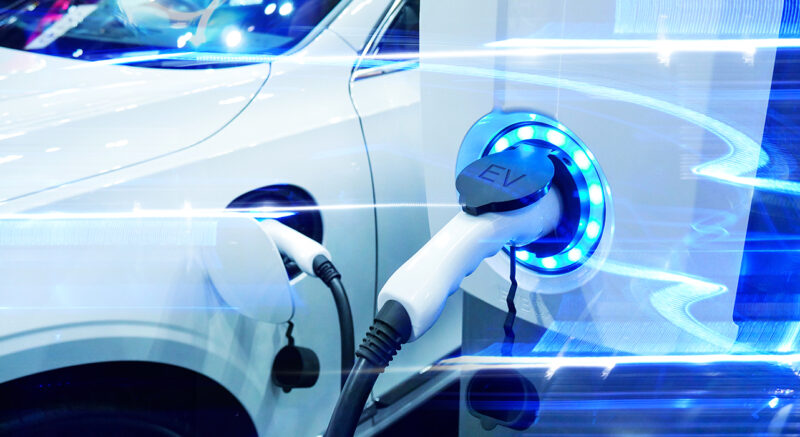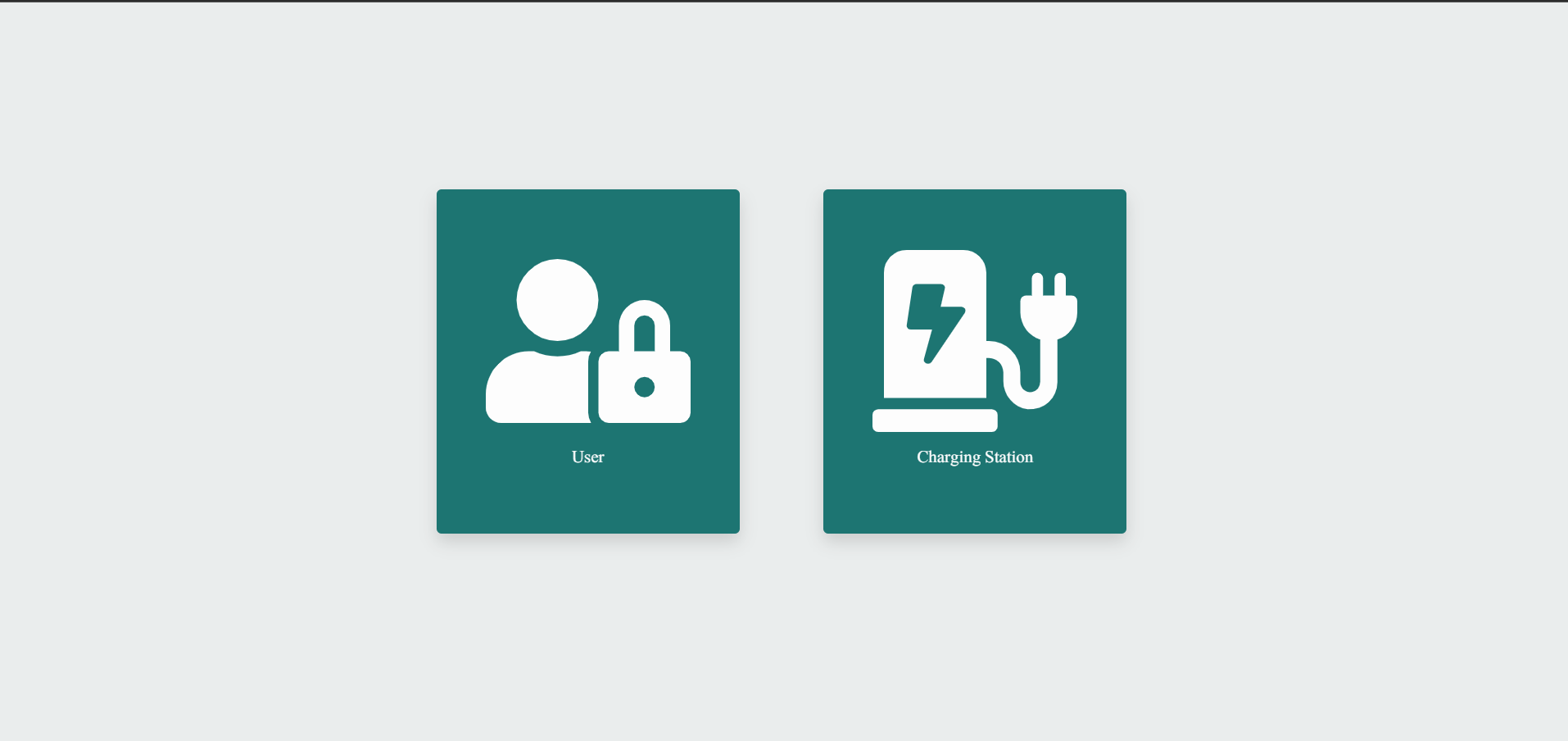Is your electric vehicle charging station a sitting duck for cybercriminals? The convenience of plugging in could be overshadowed by the risk of hacking.
Charging stations can guard against cyber attacks through a multi-layered approach, including secure hardware and software design, network segmentation, strong authentication, regular updates, physical security, and adherence to industry standards. Continuous monitoring and threat detection are also crucial.

The electric vehicle (EV) revolution is here, and with it comes the need for a vast, reliable charging infrastructure. But this infrastructure isn’t just about kilowatts and connectors; it’s also a potential target for hackers. Let’s explore why and how.
Electric Vehicle Charging Stations: The Invisible Battlefield of Network Security?
Imagine a hacker remotely controlling charging stations, causing blackouts, or stealing your customer’s data. Sounds like a sci-fi movie? It’s closer to reality than you might think.
Charging points are attractive to hackers due to their increasing numbers, often-public locations, connection to the power grid, and the potential for financial gain or disruption.
Why are charging points the “delicacy” in the eyes of hackers?
Hackers see EV chargers as a gateway to larger networks. I’ve seen firsthand how a single compromised charger can provide access to sensitive systems.
- Ubiquity and Accessibility: Charging stations are everywhere – in public spaces, workplaces, and homes. This widespread presence makes them easier to target.
- Grid Connection: Chargers are connected to the power grid, offering a potential pathway for attackers to disrupt energy distribution.
- Financial Motivation: Hackers can manipulate billing systems, steal payment information, or even hold charging networks for ransom.
- Data Theft: User data, including personal and financial information, is a valuable commodity on the dark web.
What are the “tactics” of charging station network attacks?
From my experience in the industry, I have to noticed that the attack methods are becoming increasingly sophisticated.
| Attack Type | Description | Impact |
| Man-in-the-Middle (MitM) | An attacker intercepts communication between the EV and the charger, potentially stealing data or altering charging parameters. | Data theft, compromised charging sessions. |
| Denial-of-Service (DoS) | Attackers flood the charging network with traffic, making it unavailable to legitimate users. | Service disruption, lost revenue. |
| Data Breaches | Hackers gain unauthorized access to databases containing user information, billing data, or other sensitive information. | Data theft, financial loss, reputational damage. |
| False Data Injection | Attackers inject malicious data into the system, potentially damaging EVs, the charging station itself, or even the power grid. Especially crucial attacks that can cause damage to the EVs, EVSE, V2G system and the grid. | Equipment damage, grid instability. |
| Ransomware | Hackers encrypt critical systems and demand a ransom to restore access. | Service disruption, financial loss, data loss. |
| Phishing/Quishing | Attackers use fraudulent QR codes or websites to trick users into revealing their credentials or installing malware. | Credential theft, malware infection. |
What is lost when a charging station is hacked, beyond just electricity fees?
The consequences go far beyond a few stolen kilowatt-hours. It can lead to a significant loss for EV charging station owners.
- Reputational Damage: A security breach can erode customer trust and damage the brand image of the charging station operator.
- Financial Loss: Beyond stolen electricity, there are costs associated with incident response, data recovery, and potential legal liabilities.
- Grid Instability: In extreme cases, coordinated attacks on multiple charging stations could potentially destabilize the power grid.
- Data Compromise: Sensitive user data, including personal and financial information, could be stolen and misused.
Charging Point Security Protection: How to Build a “CuWall Iron Barricade”?
Worried about your charging network turning into a hacker’s playground? It’s time to build defenses that are as robust as the charging stations themselves.
Implementing robust security measures, including encrypted communication, regular software updates, network isolation, physical security, and adherence to security certifications, can create a strong defense against cyberattacks.

Encrypted communication: How does data transmission become “invisible”?
Just like sending a coded message, encryption makes data unreadable to unauthorized parties.
- Secure Protocols: Use strong encryption protocols like TLS 1.3 for all communication: EV to charger, charger to management server, and charger to grid.
- HTTPS: This is a must-have to protect data during transmission and prevent unauthorized access.
- Authentication: Protocols ensure that only authorized systems are accessing to.
Software updates: How to make vulnerabilities “nowhere to hide”?
Think of software updates as patching holes in a fence. They fix known security flaws.
- Regular Updates: Chargers must receive regular firmware and software updates to address vulnerabilities.
- Secure Delivery: Updates should be delivered securely, using signed firmware images and secure over-the-air (OTA) mechanisms.
- Automation: Automated updates are preferable for public charging stations.
- Regular Maintenance: Regular code reviews for vulnerabilities, security testing before deployment.
Network isolation: How to prevent “one loss, all loss”?
Just like compartmentalizing a ship, network segmentation prevents a breach in one area from spreading to the entire system.
- Segmentation: Isolate critical systems (billing, grid control) from less critical ones (user Wi-Fi).
- Firewalls: Implement firewalls to control network traffic.
- Intrusion Detection/Prevention: Use these systems to monitor for and respond to malicious activity.
- VPNs: Use Virtual Private Networks for secure remote access and communication.
Physical security: Besides software, hardware also needs protection?
Physical security is like the lock on your front door – a basic but essential defense.
- Tamper Resistance: Enclosures should be physically secure to prevent unauthorized access to internal components.
- Consider the usage of tamper-proof enclosures, secure boot processes, and hardware roots-of-trust.
- Surveillance: CCTV monitoring deters physical attacks and provides evidence.
- Secure Mounting: Tethered chargers (with permanently attached cables) reduce cable theft.
Security certification: What international network security standards are there?
Certifications are like quality stamps, assuring that security practices meet industry standards.
- ISO/SAE 21434: Cybersecurity engineering for road vehicles.
- IEC 62443: Security for industrial automation and control systems (relevant to the grid connection).
- UL 2900: Software cybersecurity for network-connectable products.
- NIST Cybersecurity Framework: A comprehensive framework for managing cybersecurity risk.
- ISO 15118: Includes various security mechanisms to ensure secure communication and data exchange between EVs and charging stations.
- NIS2 Directive: Operators of critical services (including EV charging) must implement security measures.
- Open Charge Point Protocol (OCPP): Ensure secure communication channels, provide mutual authentication, and enable secure firmware updates.
- Third-Party Certifications: Look for certifications like SOC 2 Type 2.
Charging Station Network Security: Who is Responsible?
Is it solely the charging station operator’s job to keep things secure? Absolutely not. It’s a shared responsibility.
Network security is a shared responsibility among charging point operators, equipment manufacturers, users, and regulatory bodies.

Charging point operators: The “gatekeepers” of safe operations?
Operators are on the front lines, responsible for the day-to-day security of their networks.
- Implementation: Operators must implement and maintain security measures, including monitoring, updates, and incident response.
- Compliance: They must adhere to relevant regulations and industry best practices.
- User Education: Operators should educate users about safe charging practices.
Equipment manufacturers: The “founders” of safe design?
Security starts with the design and manufacturing of the charging equipment.
As a manufacturer, we at Jiangsu Tanxun New Energy Technology Co., Ltd. prioritize “secure-by-design” principles.
- Secure Hardware: Manufacturers must design chargers with robust hardware security features.
- Secure Software: Secure coding practices, regular code reviews, and vulnerability testing are essential.
- Supply Chain Security: Ensure that all components of the charging station are secure, and are not vulnerable.
User safety awareness: How to avoid “pig teammates”?
Users also play a role in maintaining security.
- Strong Passwords: Users should use strong, unique passwords for their charging accounts.
- Awareness: Be aware of phishing attacks and suspicious activity.
- Reporting: Report any suspected tampering or unusual behavior.
NIS2 Directive and EU Network Resilience Act: New regulations for charging point security?
New regulations are raising the bar for charging point security.
- NIS2 Directive: The EU’s NIS2 Directive mandates security measures for operators of critical infrastructure, including EV charging networks.
- EU Cyber Resilience Act: This act will mandate security standards and testing in product development.
The Future of Charging Station Network Security: What Can AI and Blockchain Do?
Can futuristic technologies like AI and blockchain help secure charging stations? Absolutely. They offer exciting possibilities.
AI and blockchain can enhance charging station security by enabling proactive threat detection, data integrity, and secure vehicle-to-grid interactions.

AI threat detection: How to take the initiative?
AI can learn to identify unusual patterns and potential threats.
- Anomaly Detection: AI algorithms can analyze network traffic and system logs to detect unusual activity that might indicate an attack.
- Predictive Security: AI can help predict and prevent attacks before they happen.
Blockchain technology: How to make data more credible?
Blockchain’s decentralized, tamper-proof nature can enhance data security.
- Data Integrity: Blockchain can ensure the integrity of charging data, making it more difficult for attackers to manipulate records.
- Secure Transactions: Blockchain can facilitate secure and transparent transactions between EVs, charging stations, and the grid.
V2G security: The double-edged sword of vehicle-grid interaction?
Vehicle-to-grid (V2G) technology allows EVs to send power back to the grid, but it also introduces new security challenges.
- Bidirectional Security: V2G requires robust security measures to protect both the vehicle and the grid from cyberattacks.
- Standardization: Industry standards are crucial for ensuring secure V2G communication.
Network security incidents: How to respond and report?
Even with the best defenses, incidents can happen. Having a plan is key.
- Incident Response Plan: Charging station operators should have a well-defined incident response plan to contain and recover from cyberattacks.
- Reporting: Report incidents to relevant authorities and share information with industry peers to improve collective security.
Conclusion
Securing charging stations is not just about protecting electricity; it’s about safeguarding data, ensuring grid stability, and maintaining customer trust. By working together and embracing innovative solutions, we can build a secure and reliable charging future.

